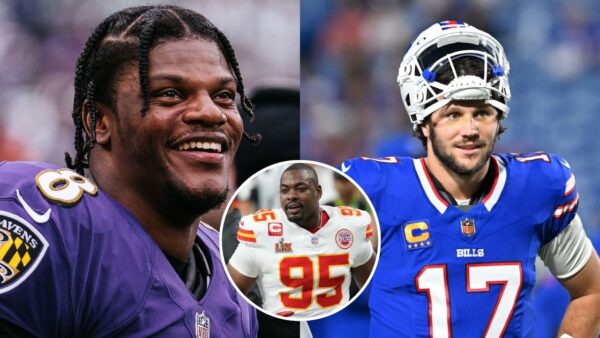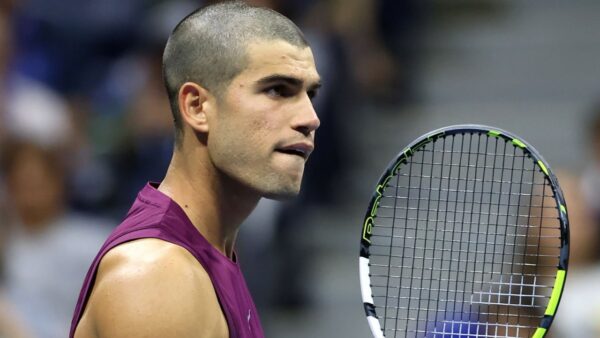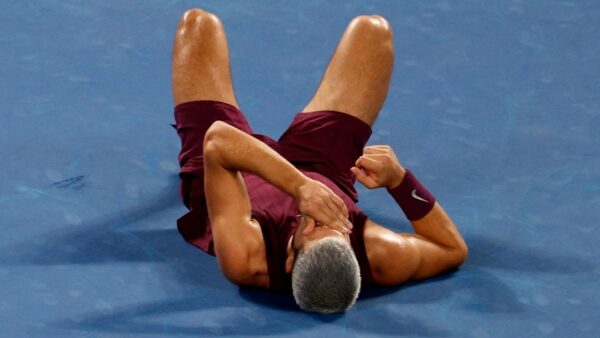2022 FIFA World Cup: All you need to know about ADIDAS’s ball that will be used in Qatar

Lionel Messi and Son Heung-min unveiling the FIFA World Cup 2022 Adidas Ball
🔍 Explore this post with:
Since the first FIFA World Cup was held in Uruguay in 1930, there have been 22 distinct ball styles used, with the Adidas period only starting with the emergence of the iconic Telstar ball at the 1970 World Cup in Mexico. Ever since the World Cup was played in 1930, the resources and styles of football have changed.
The 22nd edition of the FIFA World Cup 2022 will be hosted by Qatar. The official match ball for the 2022 FIFA World Cup in Qatar was revealed by Argentina captain Lionel Messi the same week the FIFA World Cup draw unfolded in Doha.
Also Read: Where is FIFA World Cup taking place in 2022?
What is the official Adidas ball for the FIFA World Cup 2022?

The brand-new Al Rihla 2022 FIFA World Cup football was just formally unveiled by Adidas, who further confirmed that it would only be accessible through Adidas stores until April 12, 2022. Therefore, April 13 will see the full release, which includes autonomous retailers. “Al Rihla” is the name of the 2022 World Cup ball from Adidas (Adidas 2022 World Cup Al Rihla Official Match Ball). The Arabic term for a journey or the travel journal that describes it is rich.
What is the inspiration for the official Adidas ball for the FIFA World Cup 2022?

The panel shape on Adidas’ World Cup ball for 2022 is completely new. Traditional dhow boats, particularly the distinctive triangular sails they use, are the source of inspiration for the shape of the panels. There are 20 panels altogether that make up the ball. The Doha, Qatar, skyline at night isn’t, in fact, the motivation for the color scheme. It is made up of the colors of the Qatari flag and traditionally white Arab clothes.
What are the features of the official Adidas ball of the FIFA World Cup 2022?

Adidas revealed that the FIFA World Cup 2022 Official Match Ball will highlight the connected ball technology. Speed shell is among the ball’s major technologies. The goal of the speed shell is to accelerate the ball’s rotation and flight speed to produce superior aerodynamics and a flawless shot. The Adidas CRT-CORE technology, which maintains shape and air retention while delivering speed, accuracy, and consistency, is at the core of the ball.

Al Rihla is the fourteenth FIFA World Cup ball that Adidas has produced in the past 50 years or so. Adidas created Al Rihla to fly faster than any ball in World Cup history because speed has grown to be an increasingly important feature of the match over time. Al Rihla’s panel shapes and glossiness were created by Adidas after extensive testing, both in wind tunnels and on the playing field by players, for the best in-flight accuracy and dependability.
What is the new connected ball technology in the Official Match Ball of the FIFA World Cup 2022?
Adidas announces that the FIFA World Cup 2022 Official Match Ball will feature cutting-edge connected ball technology. By granting match officials access to a remarkable amount of data and expertise, this innovation will be utilized to strengthen the VAR system and enable them to make judgments on the largest stage possible more quickly and precisely.
After being introduced in March 2018, Al Rihla will be the first FIFA World Cup Official Match Ball to feature this technology, providing precise ball data that Video Match Officials will have access to in real-time. By combining artificial intelligence and player position data, the innovative connected ball technology enhances FIFA’s semi-automated offside technology by giving Video Assistant Referees instantaneous information to benefit in decision-making.
Read More: Has any team ever defended its title at FIFA World Cup?
Read More: Who won the first FIFA World Cup?







